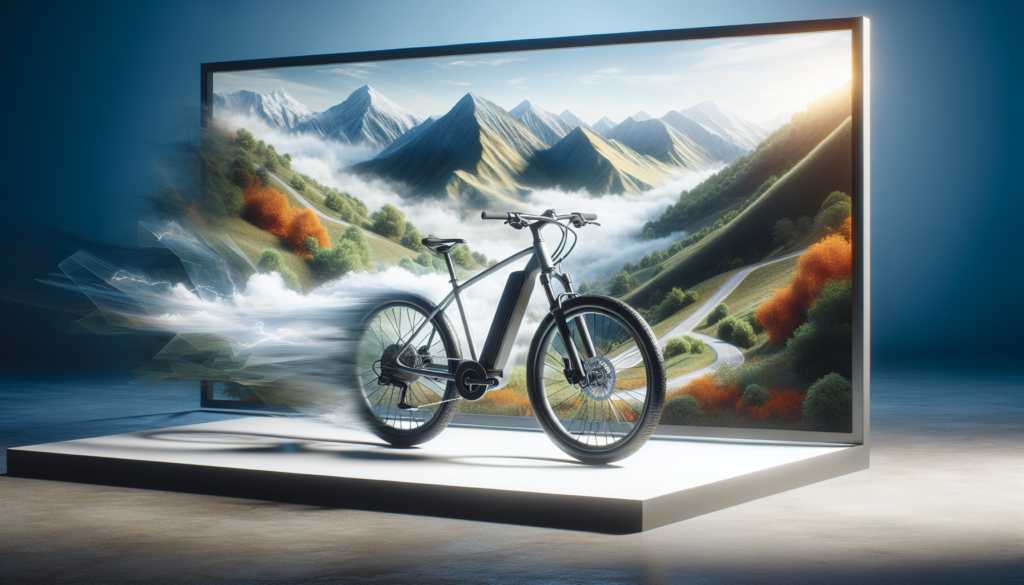In recent years, the rise of electric bicycles, has sparked a growing interest and debate when compared with traditional motorbikes. With advancements in technology and a shift towards more eco-friendly transportation alternatives, understanding the key differences between electric bicycles and motorbikes has become increasingly important for potential buyers and enthusiasts alike. While both options offer unique advantages, they cater to different lifestyles, riding experiences, and environmental considerations. Whether you’re considering adding an electric bicycle to your commuting routine or contemplating the power of a motorbike for thrilling rides, this blog will help you navigate the defining characteristics and benefits of each, allowing you to make an informed decision.
Defining Ebikes and Motorbikes
Ebikes, or electric bicycles, are two-wheeled vehicles that utilize electric motors for propulsion, enabling riders to travel faster and with less effort than traditional bicycles. They typically come with a rechargeable battery that powers the motor, offering varying levels of assistance depending on the rider’s pedaling input. Electric bicycles are designed for a more eco-friendly commuting option and are often categorized based on the power output and maximum speed they can achieve. With advancements in technology, electric bicycles have gained popularity not just for recreational riding but also as a practical means of transportation in urban areas, blending the benefits of cycling with the ease of electric support.
On the other hand, motorbikes, are powered by an internal combustion engine or an electric motor. These vehicles are designed for higher speeds and longer distances compared to electric bicycles. Motorbikes come in a variety of styles, from cruisers and sports bikes to touring models, each catering to different rider preferences and needs. Unlike ebikes, motorbikes require a motorcycle license due to their higher power output and speed capabilities. While both ebikes and motorbikes offer unique advantages, understanding their fundamental differences helps consumers make informed decisions based on their riding goals and lifestyle needs.
Key Features of Ebikes
Ebikes are distinguished by their use of an electric motor to assist with pedaling, making them an ideal choice for those seeking a more eco-friendly mode of transport. They typically feature a rechargeable battery, which provides a range of assistance levels, allowing riders to choose how much help they want from the motor. Many ebikes come equipped with features such as regenerative braking, which captures energy during braking to extend battery life, and pedal-assist systems that synchronize with the rider’s pedaling to enhance efficiency. Additionally, ebikes can often include integrated lights, racks, and fenders for added convenience and safety, making them versatile for urban commuting or leisurely rides.
In contrast to motorbikes, ebikes do not require a motorcycle license, insurance, or registration, which simplifies the process of ownership. The maximum speed for most ebikes is capped at around 20-25 km per hour, depending on local regulations, making them suitable for city travel without the need for intensive safety gear. Their lightweight design also means that they can be easily lifted, stored, or transported. Overall, ebikes present an accessible entry into electric transportation, appealing to a broad range of riders from casual cyclists to environmentally-conscious commuters.

Key Features of Motorbikes
Motorbikes are powerful two-wheeled vehicles that rely on an internal combustion engine for propulsion. They are designed for speed, long-distance travel, and versatility on various types of roads. Motorbikes come with different engine sizes, typically ranging from 125cc to over 2000cc, allowing riders to choose based on performance needs. These vehicles often have a complex mechanical system and require fuel, maintenance, and regular servicing for optimal performance. Riders appreciate the freedom and adrenaline that come with operating a motorbike, enjoying the balance of power and control they provide during rides.
In addition to performance, motorbikes are equipped with advanced features tailored to enhance rider experience and safety. Most modern motorbikes come with features like anti-lock braking systems (ABS), traction control, and advanced suspension systems that contribute to a smoother ride. Riders can also customize their motorbikes with various accessories, such as better seats, modified exhaust systems, or sophisticated navigation systems. All these key features create a robust riding experience, making motorbikes suitable for both urban commuting and thrilling adventures on open roads.

Performance Comparison: Speed and Range
When comparing the performance of ebikes and motorbikes, speed and range are two crucial factors to consider. Motorbikes, powered by gasoline engines, typically reach higher speeds than ebikes, which makes them the go-to choice for those seeking quick transportation over long distances. On average, a standard motorbike can easily reach speeds of 90km/hr or more, allowing for exhilarating rides and quicker travel times on highways. In contrast, ebikes usually have speed limitations set by law, often around 20 to 25 km/hr when using pedal assist or throttle modes. This slower speed may be limiting for some riders but contributes to a safer and more controlled riding experience, especially in urban settings.
Range is another essential aspect where ebikes and motorbikes differ significantly. Motorbikes can cover much larger distances due to their larger fuel tanks, allowing riders to travel hundreds of miles on a single tank of gas. Conversely, ebikes are equipped with batteries that provide a range of approximately 80 to 100km, depending on factors such as terrain, rider weight, and the level of pedal assistance used. While the range of ebikes may seem limited, they are often sufficient for daily commutes or short recreational rides, appealing to those who prioritize sustainability and environmental consciousness. The choice between an ebike and a motorbike ultimately boils down to individual needs regarding speed and distance.
Legal Regulations and Licensing
When it comes to legal regulations and licensing, ebikes and motorbikes differ significantly. In many regions, ebikes are classified as bicycles and do not require a license (in Singapore, just a thoery test) or registration to operate. This makes them a popular choice for urban commuters looking for an accessible and hassle-free mode of transportation. Riders often only need to adhere to local cycling laws, which can vary, but typically include wearing helmets and following traffic signals. However, it is crucial for potential ebike riders to check their local laws as regulations may vary from state to state or country to country.
On the other hand, motorbikes are subject to rigorous licensing requirements. Most jurisdictions mandate that riders possess a motorcycle license, which usually involves completing a training course and passing both a written and practical exam. Additionally, motorbikes must be registered and insured, contributing to a more complex and often costlier ownership experience compared to ebikes. Understanding these legal nuances is essential for anyone considering either mode of transport, as it impacts not just the financial aspect but also the operational freedom of the vehicle owner.
Cost of Ownership: Ebikes vs Motorbikes
When considering the cost of ownership, ebikes generally present a more economical alternative to traditional motorbikes. The initial purchase price of an ebike is often significantly lower than that of a motorbike, which can range widely depending on the make and model. Additionally, ebikes’ simpler technology means lower maintenance costs—no need for oil changes, fuel replacements, or complex engine repairs that are typical for motorbikes.
Furthermore, electric bicycles are usually more efficient, resulting in lower operational costs, especially since electricity for charging is typically less expensive than gasoline. On the other hand, motorbikes often come with variables such as insurance premiums and registration fees that can add to their overall cost of ownership. While motorbikes provide greater power and speed, they also require more regular upkeep, which can be costly over time. In contrast, ebikes may also have limited or no insurance requirements in some jurisdictions. With lesser expenses related to fuel, maintenance, and insurance, the overall cost of owning an ebike is considerably more affordable for individuals seeking an economical transportation option without compromising on the joy of riding.
Final Thoughts on Ebikes and Motorbikes
In summary, while both ebikes and motorbikes offer unique advantages for commuting and recreational use, they cater to different needs and preferences. Ebikes are perfect for those who want a more eco-friendly, budget-friendly option that promotes physical activity, making them ideal for city commuting or leisurely rides. On the other hand, motorbikes provide higher speed and power, appealing to those who prioritize performance and longer distances.
Ultimately, the choice between an ebike and a motorbike comes down to personal lifestyle and riding goals. Understanding the key differences between these two modes of transportation can significantly impact your riding experience. As urban landscapes evolve and environmental consciousness grows, more individuals are leaning towards the benefits of an ebike. However, motorbikes remain a strong contender for enthusiasts who value speed and power. By evaluating your priorities, preferences, and riding habits, you can make an informed decision that suits your needs best.
I’m curious to read more about this topic.
Welcome to Eko Life, Cheryl! We’re glad you’re interested in our e-mobility content. We’ve got a wealth of information on e-bikes, e-scooters, and e-wheelchairs, and we’re excited to share it with you. If you could provide more context or specify which aspect of e-mobility you’re interested in, we’d be happy to point you in the right direction.
Love the humor in this blog, looking forward to reading the full story.
Wow, we’re thrilled to hear that you enjoyed our blog! We’re glad you’re looking forward to reading the full story. To give you a heads up, we’re planning to release the full story on our social media channels soon. Stay tuned! If you have any other questions or suggestions, feel free to reach out to us at [email protected] or give us a call at +65 6589 8877.
Can’t help but feel that there’s more to the story, hope it gets resolved soon.
Thank you for reaching out, Dominic. We’re sorry to hear that you feel there’s more to the story. We’re actively working on improving our services and would like to hear more about your concerns. Could you please contact us via [email protected] or +65 6589 8877 so we can better understand your situation?